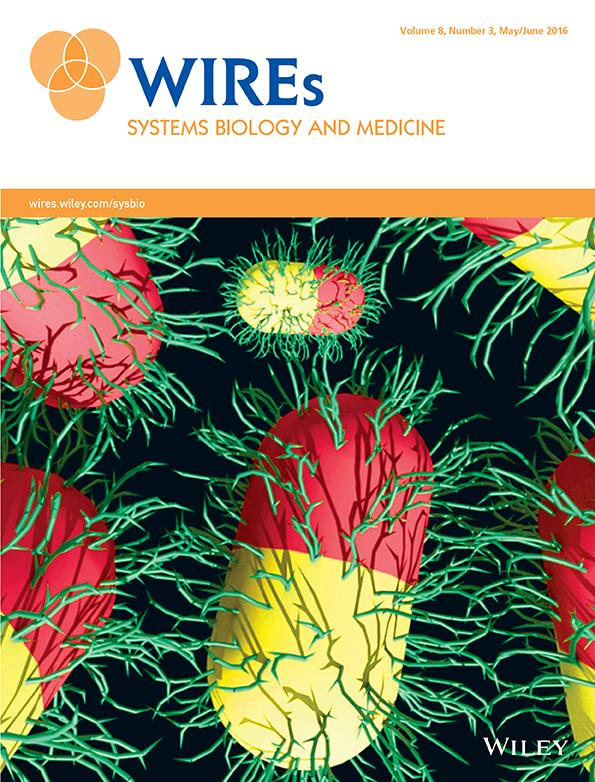呼吸神经控制的计算模型
IF 7.9
Q1 Medicine
Wiley Interdisciplinary Reviews-Systems Biology and Medicine
Pub Date : 2017-03-01
DOI:10.1002/wsbm.1371
引用次数: 53
摘要
持续的呼吸过程是哺乳动物生命所必需的气体交换的基础。每个呼吸周期都是由脑干中节律性神经回路的活动引起的,由各种调节信号形成,包括对肺膨胀敏感的机械受体反馈和依赖于血液和组织中气体成分的化学受体反馈。本文回顾了各种计算模型,旨在重现与呼吸神经控制相关的实验结果,并为未来的实验测试做出预测。该综述从描述脑干中的核心呼吸网络开始,代表负责产生有节奏的呼吸活动的中枢模式发生器(CPG),并逐步涵盖模拟不同代谢挑战所需的额外复杂性,包括肺在内的闭环反馈控制,以及呼吸和自主神经系统之间的相互作用。本综述中考虑的综合模型共享一个共同的框架,包括一个分布式CPG核心网络,负责产生正常呼吸下节律性神经活动的基线三相模式。中国生物医学工程学报,2017,39(4):571 - 571。doi: 10.1002 / wsbm.1371本文章由计算机程序翻译,如有差异,请以英文原文为准。
Computational models of the neural control of breathing
The ongoing process of breathing underlies the gas exchange essential for mammalian life. Each respiratory cycle ensues from the activity of rhythmic neural circuits in the brainstem, shaped by various modulatory signals, including mechanoreceptor feedback sensitive to lung inflation and chemoreceptor feedback dependent on gas composition in blood and tissues. This paper reviews a variety of computational models designed to reproduce experimental findings related to the neural control of breathing and generate predictions for future experimental testing. The review starts from the description of the core respiratory network in the brainstem, representing the central pattern generator (CPG) responsible for producing rhythmic respiratory activity, and progresses to encompass additional complexities needed to simulate different metabolic challenges, closed‐loop feedback control including the lungs, and interactions between the respiratory and autonomic nervous systems. The integrated models considered in this review share a common framework including a distributed CPG core network responsible for generating the baseline three‐phase pattern of rhythmic neural activity underlying normal breathing. WIREs Syst Biol Med 2017, 9:e1371. doi: 10.1002/wsbm.1371
求助全文
通过发布文献求助,成功后即可免费获取论文全文。
去求助
来源期刊

Wiley Interdisciplinary Reviews-Systems Biology and Medicine
MEDICINE, RESEARCH & EXPERIMENTAL-
CiteScore
18.40
自引率
0.00%
发文量
0
审稿时长
>12 weeks
期刊介绍:
Journal Name:Wiley Interdisciplinary Reviews-Systems Biology and Medicine
Focus:
Strong interdisciplinary focus
Serves as an encyclopedic reference for systems biology research
Conceptual Framework:
Systems biology asserts the study of organisms as hierarchical systems or networks
Individual biological components interact in complex ways within these systems
Article Coverage:
Discusses biology, methods, and models
Spans systems from a few molecules to whole species
Topical Coverage:
Developmental Biology
Physiology
Biological Mechanisms
Models of Systems, Properties, and Processes
Laboratory Methods and Technologies
Translational, Genomic, and Systems Medicine
 求助内容:
求助内容: 应助结果提醒方式:
应助结果提醒方式:


